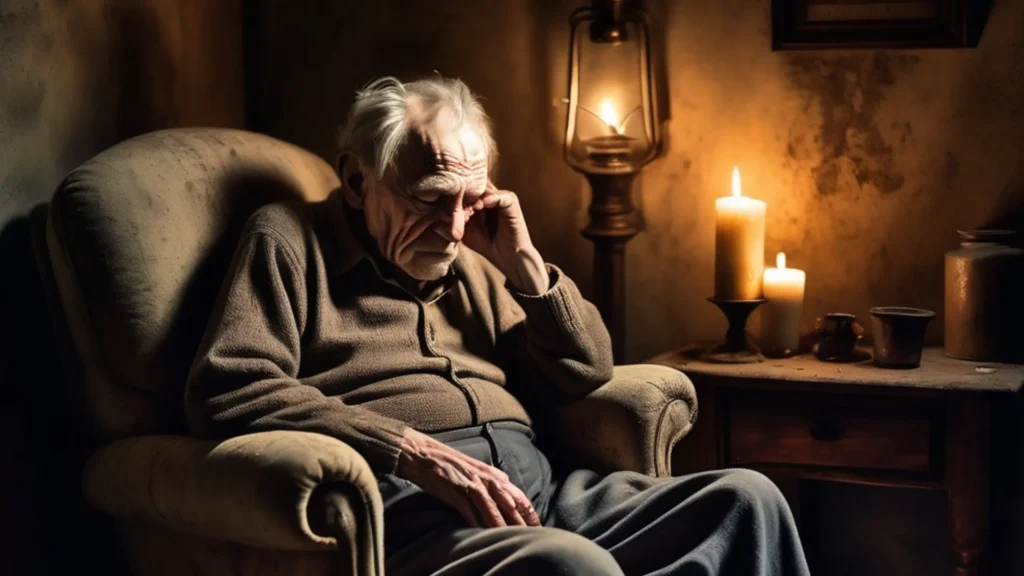Depression is a pervasive mental health disorder that transcends age. When it comes to older adults, depression presents unique challenges and nuances that are not always well understood by society, and healthcare providers. Far from being a mere byproduct of aging, depression in this demographic is a serious, diagnosable condition that affects millions worldwide.
This article delves into the nature of late-life depression, exploring its causes, symptoms, diagnostic challenges, societal implications, and treatment options.
Depression in Older Adults
Depression in older adults is often termed “late-life depression.” This is defined as a sustained period of low mood, hopelessness, and disinterest in life.
Unlike transient sadness—such as mourning a loss—depression is marked by its persistence. It typically lasts two weeks and longer. The American Psychiatric Association’s Diagnostic and Statistical Manual of Mental Disorders (DSM-5) classifies it under mood disorders, with symptoms tailored to individual experiences.
What sets late-life depression apart is its frequent subtlety. Older adults do not openly express despair or cry as younger individuals might. Instead, they complain of vague physical ailments, exhibit irritability, and retreat into silence. These symptoms are easily dismissed as “old age.”
This mischaracterization contributes to a dangerous myth: that depression is an expected part of growing older. Research from the National Institute on Aging (NIA) firmly debunks this, showing that while aging brings challenges, mental health disorders like depression are neither normal nor inevitable.
The Prevalence of Depression in Older Adults
Depression is surprisingly common among older adults. But it is not a normal part of aging. According to the World Health Organization (WHO), approximately 7% of older adults experience major depressive disorder.
In nursing homes and assisted living facilities, the rates climb as high as 13.5%. Despite these statistics, depression in older adults is often underdiagnosed and undertreated, partly because its symptoms can be mistaken for other age-related issues and dismissed as inevitable consequences of growing older.
Why Is Depression Overlooked in Older Adults?
Several factors contribute to the under-recognition of depression in older adults.
Many older adults grew up during a time when mental health issues were heavily stigmatized. As a result, they feel ashamed or reluctant to seek help for emotional distress.
The physical symptoms of depression—such as fatigue, sleep disturbances, appetite changes, and cognitive decline—are often attributed to aging or coexisting medical conditions like arthritis, diabetes, or heart disease. This misattribution leads to missed diagnoses.
Healthcare providers prioritize managing chronic illnesses over addressing mental health concerns.
Younger individuals exhibit overt signs of sadness, while older adults with depression display subtler symptoms, such as irritability, withdrawal from social activities, and increased complaints about physical ailments.
Causes and Risk Factors for Depression in Older Adults
Depression in older adults rarely stems from a single cause. It is typically the result of a combination of biological, psychological, and social factors. Below is a detailed breakdown:
Biological Factors
Aging alters neurotransmitter function, notably decreasing serotonin, dopamine, and norepinephrine—key regulators of mood. Neuroimaging studies reveal that older adults with depression often show reduced activity in the prefrontal cortex, a region tied to emotional regulation.
The National Institute of Mental Health (NIMH) reports that older adults with illnesses like stroke, Parkinson’s disease, and cancer are up to twice as likely to develop depression. Pain and disability amplify this risk. These create a feedback loop where physical decline fuels emotional distress.
Polypharmacy is common in older age. Many Older adults take five or more medications daily. Drugs like beta-blockers, benzodiazepines, and steroids can induce depressive symptoms. A 2023 study in The Journals of Gerontology found that 15% of older adults on such medications reported mood changes.
A family history of depression increases susceptibility, though this is less studied in late-onset cases.
Psychological Factors
Older adults often face multiple bereavements—spouses, siblings, friends—in their lifespan. Unresolved grief transforms into depression. Retirement can become a psychological burden if it strips purpose. Similarly, physical limitations—like losing the ability to drive—may foster helplessness.
Alzheimer’s or vascular dementia often coexist with depression. The “chicken-or-egg” question persists: does cognitive decline cause depression, or does depression accelerate cognitive loss? Research suggests both can be true.
Social Factors
A 2024 report from the U.S. Surgeon General labeled loneliness an “epidemic” among seniors, with 1 in 3 living alone. The COVID-19 pandemic worsened this.
Fixed pensions and rising healthcare costs plunge older adults into financial insecurity. In the U.S., 10% of seniors live below the poverty line, per the Census Bureau.
Ageism erodes self-esteem in some older adults. In some cultures, mental health discussions remain taboo, discouraging help-seeking.
Recognizing the Symptoms of Depression in Older Adults
Symptoms of late-life depression vary widely. They can be grouped into four domains:
Emotional Symptoms: Persistent gloom, guilt, worthlessness, and irritability. Older adults might mask sadness with stoicism, saying, “I’m fine,” while inwardly struggling. Anxiety often accompanies depression, manifesting as excessive worry about health and finances.
Physical Symptoms: Fatigue, unexplained headaches, back pain, and digestive issues are common complaints. Appetite shifts—either overeating or undereating—may lead to unintended weight changes. Sleep disturbances disproportionately affect this group.
Cognitive Symptoms: Trouble focusing, forgetfulness, and slowed speech mimic dementia. Unlike true dementia, these symptoms often improve with depression treatment.
Behavioral Symptoms: Social withdrawal is a hallmark—declining invitations, skipping hobbies, and neglecting hygiene. Some turn to alcohol or sedatives.
Diagnosing depression in older adults is like solving a puzzle with missing pieces. Several factors complicate the process. The symptoms of depression in older adults overlap with other conditions.
Symptoms like fatigue and memory lapses could stem from depression, dementia, hypothyroidism, and medication side effects. Geriatric specialists use tools like the Geriatric Depression Scale (GDS) to differentiate among them.
Older adults may downplay emotional distress. They focus on physical woes instead. A doctor might treat arthritis pain without asking, “How’s your mood?”
Some clinicians assume low energy and isolation is par for the course in aging, missing red flags.
Beyond diagnostic hurdles, societal and systemic barriers obscure depression in older adults. Generations raised to “tough it out” may equate seeking help with weakness. In a 2023 AARP survey, 40% of seniors said they’d never discuss mental health with a doctor.
Rural areas often lack geriatric psychiatrists, and Medicare coverage for therapy varies. Telehealth has improved access, but not all seniors are tech-savvy.
Family members often attribute withdrawal to grumpiness rather than depression. This delays the support system.
The Impact of Untreated Depression in Older Adults
Untreated depression in older adults have severe consequences. It affects not only their quality of life but also their overall health outcomes. Depression has been linked to poorer management of chronic diseases, slower recovery from surgery, and increased mortality rates. A 2021 American Journal of Psychiatry study found depressed seniors had a 30% higher risk of cardiovascular events.
Studies suggest that untreated depression accelerates cognitive impairment and increases the risk of developing dementia.
Older adults, particularly men, have one of the highest suicide rates compared to other age groups. In the U.S., those over 85 are twice as likely to die by suicide as teens, per the CDC. Depression is a leading risk factor for suicidal ideation and behavior in this population.
Depressed seniors lean heavily on family, straining relationships and finances.
Treatment Options for Depression in Older Adults
Effective treatment for depression in older adults involves a holistic approach that addresses both the biological and psychosocial aspects of the condition. Key strategies include:
Psychotherapy: Cognitive Behavioral Therapy (CBT) helps older adults identify negative thought patterns and develop healthier coping mechanisms. It has been shown to be highly effective in reducing depressive symptoms.
Interpersonal Therapy (IPT) focuses on improving interpersonal relationships and resolving conflicts, which alleviate feelings of loneliness and isolation. Reminiscence Therapy encourages older adults to reflect on positive life experiences.
Medication: Antidepressants, such as selective serotonin reuptake inhibitors (SSRIs) and serotonin-norepinephrine reuptake inhibitors (SNRIs) are commonly prescribed for older adults with depression. However, caution must be exercised due to potential drug interactions and side effects.
Non-pharmacological treatments, such as electroconvulsive therapy (ECT), may be considered for severe cases where medication and psychotherapy have proven ineffective.
Lifestyle Modifications: Regular physical activity has been shown to improve mood and reduce depressive symptoms in older adults. Activities like walking, swimming, and yoga can be particularly beneficial.
A balanced diet rich in omega-3 fatty acids, antioxidants, and vitamins supports brain health and emotional well-being.
Encouraging participation in community programs, volunteer work, and group activities combat loneliness and foster a sense of purpose.
Support Systems: Family involvement is crucial in supporting older adults with depression. Open communication, empathy, and encouragement to seek professional help make a significant difference.
Peer support groups provide opportunities for older adults to connect with others facing similar challenges. These initiatives reduce the feelings of isolation.
Preventing Depression in Older Adults
Prevention plays a vital role in mitigating the onset of depression in older adults. Strategies include:
- Promoting active aging through lifelong learning, physical activity, and meaningful engagement.
- Educating caregivers, healthcare providers, and communities about the signs and risks of depression.
- Ensuring access to affordable mental health services tailored to the needs of older adults.
Depression in older adults is a treatable condition. It deserves greater attention and understanding. By recognizing the unique challenges faced by the older population and adopting a comprehensive approach to care, we can improve the lives of countless older adults struggling with this invisible burden.
As a society, we must strive to create environments where older adults feel valued, supported, and empowered to seek the help they need. After all, aging should be a time of fulfillment and peace—not one overshadowed by despair.




